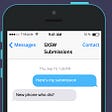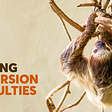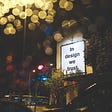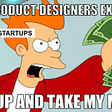Bringing knowledge & leverage to bank advisors with the new Amundi Suite
Amundi Asset Management partners with Studio Artefact 3000 to redesign their bank advisor’s platform.
About the project
Amundi is Europe’s largest asset manager. In an increasingly competitive market, the retail marketing team wanted to redesign their bank advisor platform, Amundi Suite. The Suite is bank advisors' go-to solution to follow, distribute, and sell investment solutions, with the help of the right services and content available on the platform. Only one problem remained: the experience of Amundi Suite doesn’t live up to its content and features.
Challenge
Amundi briefed us to initiate the platform redesign from user research to the delivery of 3 key templates and a design system. The challenge of the project was twofold:
- First, to set up effective co-conception and collaboration methods that better involve local marketing teams. Amundi’s Retail Marketing team represents 2 central teams and 21 local teams worldwide of 230 professionals, yet the glocal collaboration is unclear and difficult to implement. The team needs better co-conception methods to leverage local marketing expertise and intelligence.
- Second, to design a white-label tool that gives local teams the flexibility to adapt the features and content to best fit their market or specific demands from partner-distributors, while guaranteeing a consistent and professional brand identity of Amundi Asset management.
Methodology
We followed a Design Thinking approach, using the double diamond method — discover, define, design, deliver — with a hard focus on co-creation both with the end-users and our clients.
Services
User Research, Workshops Animation, User Experience (UX), Interface Design (UI), Prototyping, Design System
Result
I. Discovery
To better understand the project’s vision, the current product’s efficiency, and the users' needs and motivation, we began the project with user and market research.
Understand the product
As a starting point, we conducted a UX/UI audit of the existing Amundi Suite based on a list of ergonomic criteria, in order to study the efficiency of the current platform. The audit brought us a view of the product's usability, allowing us to define the research direction & write our first hypothesis.
We nurtured our intuitions with a benchmark on toolbox and publishing platforms to identify specific design patterns we can inspire from for the Amundi Suite redesign.
Empathise with users
We conducted semi-directive user interviews with Amundi Suite end-users. The user-interview guide was written from our hypothesis and our learning from the stakeholder’s interview conducted during the briefing phase.
6 local sales & marketing team members were interviewed and shared with us insights on their experience vis-a-vis the current product. Their inputs covered the pain points when it comes to browsing and/or contributing content on the platform as well as the features they hope to have available.
We ended the discovery phase by wrapping up all our insights collected from the discovery to present them during a webinar for Amundi Suite stakeholders across different countries.
The webinar helped to keep everyone on track and aligned with our vision and understanding of the project for the workshops to come.
II. Definition
To activate our insights gathered during the research phase, we facilitated 3 online workshops to co-create the new Amundi Suite with our studio’s experts, end-users, and stakeholders for a total of 12 participants.
Workshop #1 — Ideate
The first workshop aimed to generate as many ideas and potential solutions as possible that would help improve the Amundi Suite. We eventually came up with 118 ideas in total within 90 minutes, covering all aspects of the platform.
Workshop #2 — Prioritise
The second workshop consisted in prioritising ideas regarding their relevance and feasibility to align on which features were the most indispensable. We shortlisted 20 ideas to integrate into the mockup designs while keeping the rest in the product backlog.
Workshop #3— Design Brief
The last workshop was done to have a visual understanding of the layout and interaction between the pages before the creative phase officially gets underway. We used Whimsical to quickly build low-fi wireframes using a variety of components while brainstorming directly with the participants.
Since we co-created the whole experience together, involving both end-users and stakeholders, we were able to move forward in UX/UI design with everyone aligned on the product’s vision.
The co-conception workshops proved to be constructive and fruitful as participants got to know each other, and their point of view, and actively contributed their ideas to improve the Amundi Suite.
“It was really fun to actively participate! I had the impression that they really listened to us and I hope that we will have some changes in Suite to make it better.”
“I know that the top ratings for a workshop are not always helpful, but I really liked it. I enjoyed the process and really appreciated how you kept broke the ice at the beginning and how you kept us involved :) Good job.”
III. Design
With a clear view of the platform’s vision, our UX and UI designers were ready to design mock-ups on Figma using an atomic design approach, anticipating the design system to come.
Overall Principles
- A modular design that allows local marketing teams to drag-and-drop and (de)activate according to their need.
- Functional zones that would streamline the navigation all along the user journey: breadcrumb menu, collapsible navigation bar…
- More professional visual identity with the proposition of a light/dark mode switch for the platform and the colour palette applying the client’s main colour.
Home Page
- Highlight the toolbox property by adding a shortcut to quickly access the tools
- Hierarchise content and highlight the most recent & important content thanks to a more flexible layout and dedicated widgets
- Rationalise the navigation flow by applying a funnel logic(show most generic and aggregated content on top and detail specific services down the page)
- Present a sneak peek for each service before the deep dive at the Section Page
Section Page
- Allow users to find the relevant contents easily with more visible search, filter by category, and filter by tags functions on the page
- Hierarchise the search results, always highlighting the most relevant ones on top and better organise the results by category
Focus Page
- More media-like, more readable by dedicating more place to the content and integrating flexible infographic, image, video blocks inside the content section
- Rethink the ergonomy for reading by introducing features including “listen”, “share”, “switch light/dark mode”, etc.
- Retain the users on the Amundi Suite by making related content more visible and introducing a cross-content feature
- Making the editor’s experience more pleasant by introducing pre-built content blocks that contributors can use without coding lines.
Design review session
In order to evaluate the effectiveness of our design, we organized a follow-up design review session with workshop participants to solicit their feedback.
We addressed their feedback and re-iterated the design after the session.
IV. Delivery
With the Suite’s key templates validated, we were able to rationalise the design into a robust design system to share for future rework, releases and client needs. The final design was also shared with the Amundi development team and communication team for internal alignment.
Design System
We came up with a design system to add consistency and structure. We chose the readable and functional typeface Roboto that would improve reading legibility at both small and large sizes across various screen sizes. The colour palette reflects the Amundi clients’ brand identity (eg. green for Credit Agricole), but with more modern nuances. We also implemented a set of icons that the marketing teams can use on the toolbox in the future.
Technical specifications
To wrap up the project and initiate the handover, we wrote the technical specifications dedicated to the development team in order to define the front-end requirements that will be addressed by the project.








